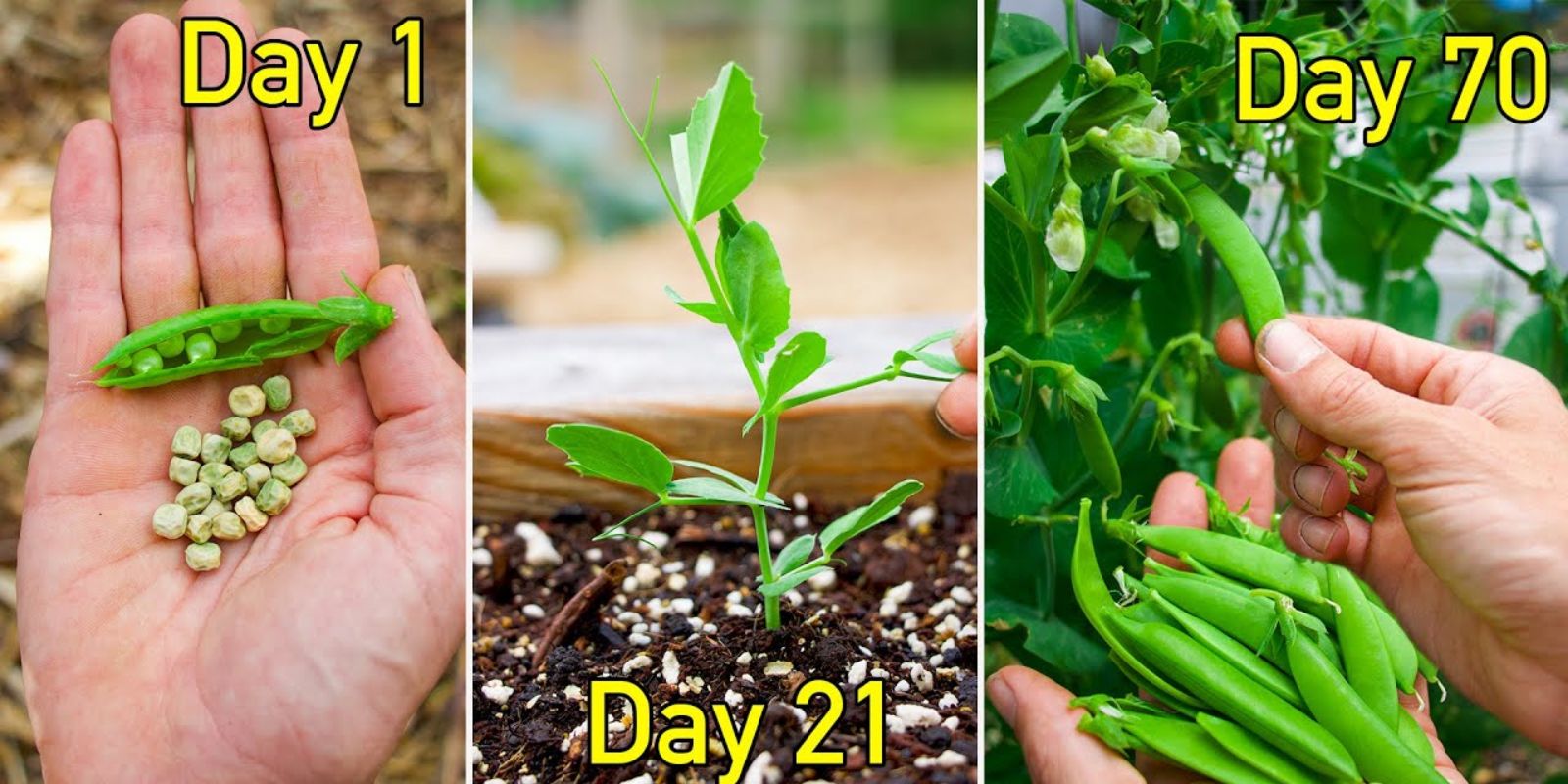Green peas (Pisum sativum) are one of the easiest and most rewarding vegetables to grow. They are packed with nutrients, add nitrogen to the soil, and thrive in cooler weather. Whether you’re a beginner gardener or an experienced grower, learning the best practices for planting, growing, and harvesting peas will ensure a plentiful harvest. This guide will walk you through everything you need to know to cultivate sweet, tender, and homegrown green peas successfully.
Why Grow Green Peas?
Green peas are an excellent addition to any garden because they are:
- Nutritious: High in fiber, protein, and vitamins.
- Easy to grow: Low maintenance and thrive in cooler weather.
- Soil improvers: Peas fix nitrogen in the soil, benefiting future crops.
- Versatile in cooking: Great for fresh eating, freezing, or adding to soups and stir-fries.
When to Plant Green Peas
Best Time for Planting
Peas are a cool-season crop, meaning they grow best in temperatures between 55°F and 75°F (13°C – 24°C). They do not tolerate heat well, so timing is crucial.
- Spring Planting: Sow seeds 4-6 weeks before the last expected frost.
- Fall Planting: In cooler climates, plant peas in late summer for a fall harvest.
- Frost Considerations: Peas tolerate light frosts but may struggle in prolonged freezing temperatures.
How to Plant Green Peas
Step 1: Choose the Right Pea Variety
There are three main types of peas:
- Garden peas (English peas): Sweet, but need shelling.
- Snap peas: Edible pods with a crunchy texture.
- Snow peas: Flat, edible pods used in stir-fries.
Step 2: Select a Planting Site
- Choose a location with full sun (at least 6 hours of direct sunlight daily).
- Ensure well-drained, fertile soil with a neutral pH of 6.0-7.5.
- Avoid planting in areas where peas or beans have been grown recently to prevent soil-borne diseases.
Step 3: Prepare the Soil
- Loosen the soil to a depth of 6-8 inches.
- Mix in compost or aged manure to improve fertility.
- Avoid high-nitrogen fertilizers since peas fix their own nitrogen.
Step 4: Sow the Seeds
- Plant seeds 1 inch deep and 2 inches apart in rows.
- Space rows 18-24 inches apart for better airflow.
- For container gardening, use a pot at least 12 inches deep.
- Water gently after planting.
Step 5: Provide Support (For Climbing Varieties)
- Peas benefit from trellises, stakes, or a netting system.
- Install supports at planting time to avoid disturbing roots later.
Caring for Growing Pea Plants
Watering
- Keep soil evenly moist, but not waterlogged.
- Water deeply once or twice a week, depending on rainfall.
- Mulch around plants to retain moisture and prevent weeds.
Fertilizing
- Peas generally don’t need heavy feeding.
- If needed, apply a balanced fertilizer (5-10-10) when plants are 4-6 inches tall.
Weeding & Mulching
- Keep the area weed-free to reduce competition.
- Use organic mulch (straw, grass clippings, or wood chips) to conserve moisture.
Pest & Disease Control
- Common Pests: Aphids, pea weevils, and cutworms.
- Natural Solutions:
- Spray with neem oil or insecticidal soap for aphids.
- Use row covers to protect young plants.
- Diseases: Watch out for powdery mildew and root rot.
- Prevention:
- Rotate crops yearly.
- Avoid overhead watering to reduce fungal infections.
Harvesting Green Peas
When to Harvest
- Garden Peas: When pods are full and rounded but still tender.
- Snap Peas: When pods are plump but still crisp.
- Snow Peas: When pods are flat, before seeds develop fully.
How to Harvest
- Pick peas in the morning when they are at their sweetest.
- Use two hands to avoid damaging vines.
- Harvest every 1-2 days to encourage continuous production.
Storing Fresh Peas
- Refrigerate: Store fresh peas in the fridge for up to 5 days.
- Freeze: Blanch and freeze peas for long-term storage.
- Dry: For soups, dry peas and store in an airtight container.
Common Mistakes to Avoid
1️⃣ Planting too late – Peas dislike hot weather, so plant early. 2️⃣ Overwatering – Leads to root rot and fungal diseases. 3️⃣ Not providing support – Some varieties need trellises for better growth. 4️⃣ Ignoring pests – Regularly check for aphids and take action early. 5️⃣ Waiting too long to harvest – Peas lose sweetness if left on the vine too long.
Conclusion
Growing green peas is simple, rewarding, and a great way to enjoy fresh, homegrown vegetables. By planting at the right time, providing proper care, and harvesting on time, you’ll be rewarded with a delicious and nutritious crop. Whether you eat them fresh, freeze them for later, or add them to your favorite dishes, homegrown peas are worth the effort!
🌱 Have you tried growing green peas? Share your experiences and tips in the comments below! 🍃👇
#GrowYourOwn #OrganicGardening #PeaHarvest #HomegrownFood #GardeningTips #PlantingSeason #ViralGardening

